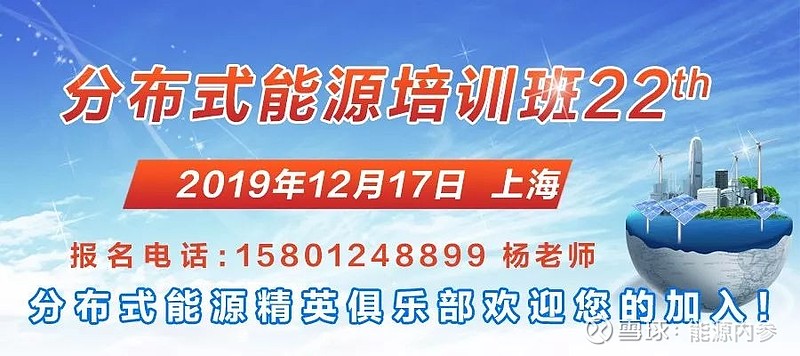
0 引言?
0 Introduction?
能源互联是当前能源发展的一个重要趋势,倡 导冷、热、电、气等多种能源的协调互补与综合利 用。但是,多种能源间的耦合互补,不可避免地 会增加能量管理的难度,故在能源互联网中对能源 管理通常采用“分布自治,集中协调”的思路。在 能源互联网中,强调开放共享、多元用户参与等理念,工业界和学术界逐渐意识到,能源互联网的 一些相关理念、思路与区块链技术相吻合。?
区块链技术是一种将分布式数据存储、点对点(p2p)传输、共识机制、加密算法等新型计算机技术 进行深度应用的公开透明、去中心化的数据库技术,最早被用于比特币领域。由于其存在 去中心化、开放、智能等优点,受到国内外越来越多的学者们的关注与研究并应用在能源领域。目前,许多研究人员结合不同的场景、目标对能源区块链进行了一系列理论研究与实践工作。在相关政府、科研机构、初创公司的支持下,国外开展了能源区块链示范工程建设,例如:欧盟第七框架计划、澳大利亚首届智慧城市和郊区计划等都对能源区块链项目进行了资助与支持。 Block chain technology is an open and transparent, decentralized database technology for deep application of new computer technologies such as distributed data storage, point-to-point (p2p) transmission, consensus mechanisms, encryption algorithms, etc. It was first used in bitcoin. Because of its presence, decentralized, open, intelligent, etc., it has received the attention and research of a growing number of scholars at home and abroad in the field of energy. 目前,已有一些能源区块链项目实现落地与运行。本文对国内 外能源区块链的应用工程进行总结,分析了能源区块链应用工程的实践经验,并对中国能源区块链的 发展建设提出了相关建议。 At present, there are a number of energy block chain projects that are in place and operational. This paper summarizes the application of the energy block chain in China and abroad, analyses the practical experience of the application of the energy block chain and makes recommendations for the development of the energy block chain in China. 1 能源区块链的概念与特点? 1 Concept and characteristics of the energy block chain? 目前,学术界对能源区块链尚未形成统一的定义。但一般而言,能源区块链是指区块链技术在能源领域的应用。具体为:电力、石油、天然气、供冷, 以及供热等各能源子系统节点,利用有序链接的加密区块来验证并存储相关能源交易数据信息,使用共识机制进行分布决策及维护全网数据的一致性, 利用智能合约自动完成有关数据信息的传递、相互 验证或执行的革命性的去中心化能源互联的数据结构。能源区块链示意如图1所示。 Currently, there is no uniform definition of energy block chains in academia. But, in general, energy block chains refer to the application of block chain technologies in the field of energy. Specifically, energy subsystem nodes such as electricity, oil, natural gas, cold supply, and heating are used to authenticate and store data on energy transactions using encrypted blocks with an orderly link, to use consensus mechanisms for distribution decision-making and to maintain data consistency across the network, and to use smart contracts to automatically complete revolutionary decentralization of data messages as shown in Figure 1. 能源区块链也具有一般区块链的4个主要通用特点: The energy block chain also has four main common features for the general block chain: ①去中心化,能源区块链技术基于p2p结构, 不存在中心节点。数据在多个节点间相互备份,数 据冗余度较高,数据存储的可靠性和鲁棒性较高; 1 Decentralized, energy block chain technology is based on p2p structures, with no central nodes. The data are backed up between multiple nodes, with high redundancy, reliability and robustness in data storage; ②透明化,整个能源区块链系统的运行规则是公开 透明的,所有的数据信息也公开; 2 Transparency, rules for the operation of the entire energy block chain system are open, transparent and all data information is available; ③系统自治性,能 源区块链通过共识算法、智能合约等手段保障系统 无需第三方信任担保和监督,也能完成系统的自动运行行和运转; 3 System autonomy, capable of guaranteeing the system by means of consensus algorithms, smart contracts, etc., without the need for third-party trust guarantees and supervision, the automated operation and operation of the system; ④可追溯性,区块链通过对全网各个节点加盖时间戳,交易信息传递路径通过完整的链式形式实现记录与追踪,交易信息无法被篡改。 4 Retroactivity. The block chain is time stamped on all nodes of the net, the transaction information transmission path is recorded and tracked through a complete chain format, and the transaction information cannot be tampered with. 区块链的去中心化、开放透明等特点契合了能源发展的趋势。目前,区块链技术主要应用于分布式电力交易、绿色清洁电力认证及交易、电动汽车充 电及充电桩共享等领域,大多数国家都在积极推动这些行业的发展,但这些领域普遍存在着交易双方间相对缺乏信任的现象,往往需要第三方或传统中心化的管理机构进行信任担保。而区块链技术可以增加交易双方的信任度,无需通过第三方进行信任担保,减少中间机构与中间费用。? The decentralization of block chains, openness, etc., coincides with trends in energy development. Currently, block chain technologies are mainly used in distributed power trading, green clean electricity certification and trading, electric car charging and charge-post sharing, and most countries are actively promoting these industries, but there is a general lack of relative trust between the parties to the transaction, often requiring trust guarantees from third parties or traditional centralized regulators. 2 国外应用工程概况 2 Overview of applications abroad 2.1 美国纽约布鲁克林微网项目? 2.1 The Brooklyn MicroNet Project, New York, USA? 美国是全球能源区块链技术开发与应用实施最 活跃的国家之一,其较为先进的科技水平、较好的融 资环境等条件均为能源区块链的技术研发与商业应 用提供了较好的条件。? The United States is one of the most active countries in the development and application of global energy grid technologies, with more advanced technology levels, better financing environments, etc., all providing better conditions for technology development and commercial use of energy grids? 美国纽约布鲁克林社区的Tansactive Grid项目是世界上最早投入实践的能源区块链项目。该项 目由美国新创能源公司 LO3与区块链技术研发商Consensys共同开发。该项目示意图如图2所示。 The Tansactive Grid project of the Brooklyn community in New York, United States, is the world’s first energy block chain project to be put into practice. This project was developed by the American Creative Energy Corporation, LO3, with Consensys, a block chain technology developer. 在该项目中,共有10个家庭参与。其中, 5家安装了屋顶光伏发电系统,为供电家庭;另外5家为购电家庭。整个项目采用P2P的直接能源交易,无需经过第三方的电力运营商。智能电表底层应用集成了基于以太坊区块链智能合约功能,可对用户的发电、用电以及交易电量等信息进行采集,并将数据同步上传至公共区块链网络平台上。智能电表记录的发电量数据,可以为区块链技术平台创建代币,代表供电家庭屋顶光伏的剩余电量。这些代币就代表 着屋顶光伏发出清洁电能的总量,虚拟代币可通过区块链智能钱包进行交易。? There are 10 households involved in the project. Of these, five have installed roof photovoltaic power systems for power-generating households; and five have purchased electricity. The whole project uses direct energy transactions from P2P without the need for third-party power operators. The smart meter bottom application is based on an Ether block chain smart contract function that allows the collection of user information, such as electricity generation, electricity use, and trade in electricity, and synchronizes the data to the public block chain network platform. The smart meter logs generate power volume data that can create a proxy for a block chain technology platform, representing the surplus amount of electricity that poweres a household roof. These tokens represent the total amount of clean electricity that is generated by roof lumbers, which can be traded through a grid smart wallet? 通过该项目,社区内的居民可以节省购电费用, 而且配置屋顶光伏的居民用户可以将剩余电量直接出售给用户,获得收益。布鲁克林微网项目对美国以及全球的能源区块链项目起到了示范作用,推动了相关P2P分布式电力交易的发展。但是,布鲁克林微网项目的试验规模较小,总共只有10个参与用 户,只是证明了小规模微电网进行分散电力交易的 可实施性,但对于较大规模的微电网还需进行下一步验证。此外,由于纽约市不允许个人直接参与电力交易,布鲁克林微电网项目曾一度被叫停,能源区块链项目对政策的依赖性极高。? Through this project, residents in the community are able to save on electricity purchases, and residents who are equipped with roof photovoltaics are able to sell the remaining amounts directly to users for their benefit. The Brooklyn MicroNet project was a demonstration of the energy grid project in the United States and around the world, driving the related P2P-distributed electricity trade. 2. 2 欧盟Scanergy项目? 2. 2 EU Scanergy Project? 根据欧盟“2050能源路线图”,欧盟将在2050年减少80%的温室气体排放。能源区块链技术可支撑分布式能源的p2p直接交易,所发电能无需远距离及升降压传输,交易不必通过传统中心化、集中式的模式,可促使能源就地消纳,降低长距离输电 造成的线路损耗,提高能源效率,Scanergy项目是 受到欧盟第七框架计划资助项目之一。? According to the EU's Energy Road Map 2050, the EU will reduce its greenhouse gas emissions by 80% by 2050. The energy block chain technology supports the direct p2p trade in distributed energy, which does not require long-range and pressure transmission, and which does not require a traditional centralized and centralized model to drive energy off-site, reduce long-distance transmission of electricity, and improve energy efficiency. The Scanergy project is one of the projects funded by the EU's Seventh Framework Plan. Scanergy项目同样基于以太坊的智能合约通 用平台。其整体示意图如图3所示。电能生产者向配电网输入、售出绿色电能时,配网运营商会进行确认,确认成功后智能合约将会生成相应的虚拟代币(NRGcoin)并将代币提供给绿色电能生产方。当购 电方期望购买绿色清洁能源时,需使用NRGcoin支 付。可使用欧元、美元等货币在外部交易市场购买 NRGcoin,1kW·h的绿色电力被规定永久等价 1个 NRGcoin。 The Scanergy project is also based on a smart contract platform based on the Etherms. The overall map is shown in figure 3. When electricity producers import and sell green power into the grid, the Chamber of Trade in Network Operations confirms that a successful smart contract will generate the corresponding virtual token (NRGcoin) and provide it to a green power producer. When buyers expect to buy green clean energy, they will have to pay NRGcoin. 该项目具有的优势: The advantages of the project are: ①交易简单,可激励用户参与电力市场; 1 Simple transactions can stimulate user participation in the electricity market; ②清洁电力价格被控制在合理的区间内,不会使得市场交易过于混乱;③电力交易采用虚拟代币,具有可信任性; Clean electricity prices are contained in reasonable areas and do not cause market transactions to be too confusing;3 electricity transactions are using virtual tokens and are trusted; ④各方均可获益。 All parties are entitled to benefit. 不可更改的区块链智能合约消除了绿色能源生产者对市场政策变更的担心,为消费者提供更加优惠的绿色能源, 无论外部电价如何上涨,原先低价购买的NRGcoin仍然可以购买1kW·h的能源,降低政府对可再生能源的扶持补贴成本。对电网运营商而言,可降低电网峰值负荷,延缓电网升级改造费用。尽管欧盟Scanergy项目具备许多优势,但仍存在一些不足之处:目前,监管政策尚不明确,阻碍了大众对能源区块链项目的接纳。此外,该项目的经济模型、交易安全、数据隐私等方面亟需完善。? Unalterable block chain smart contracts remove market policy changes by producers of green energy, provide consumers with more favourable green energy sources, regardless of how the external electricity price rises, and NRGcoin, which was purchased at a low price, can still buy 1 kWh energy and reduce the cost of government support subsidies for renewable energy. For grid operators, the peak load of the grid can be reduced and the cost of grid upgrading slowed. 2.3 德国电动汽车Share&Charge项目? 2.3 German electric car Share&Charge Project? 目前,德国正在大力推行能源转型,推广电动汽车的使用并考虑禁售燃油汽车。然而,充电设施数量不足、充电交易不透明、各家充电公司支付协议和支付方式不统一等因素制约着电动汽车的发展。共享充电桩被认为是区块链技术最适用能源方面的领域之一。德国Share&Charge项目是将区块链技术应用在共享充电桩领域的项目之一,其整 体示意如图4所示。 Currently, Germany is making a major effort to transform energy by promoting the use of electric cars and considering banning the sale of fuel cars. However, the insufficient number of recharge facilities, the lack of transparency in charging transactions, and the inconsistent payment agreements and payment patterns of the various charging companies are constraining the development of electric cars. 私人和商业充电站可以在Share&Charge平台上将充电桩进行共享出租,并可以设置充电价格、费率等信息。当电动汽车需要充电时,车主通过手机软件搜索附近的共享充电桩并可查看相关电价信 息。充电时,通过智能插座与共享充电桩进行连接 并使用手机进行确认,同时,可查看充电数据、交易记录等信息。? Private and commercial chargers can share and lease charge posts on the Share&Charge platform, and can set charging rates, rates, etc. When an electric car requires charging, the owner searches the nearby shared chargeposts through mobile software and can see the relevant interest rates. When charged, connects to the shared chargepole through a smart plug and uses a mobile phone to confirm the charge, and can check the charge data, transaction records, etc. 该项目基本工作原理是通过区块链技术的分布式记账实现交易双方的计费透明化,增进交易双方信任。该项目可激励私人充电桩进行共享,增加充电桩的使用率,解决电动汽车充电难的问题,促进电动汽车的发展,实现节能减排与能源转型。该技术 已被推广至美国加利福尼亚州。但目前该项目 的发展也受到一些现实条件的制约,例如:监管法规和手段不明确,如何在不影响用户体验的条件下对用户的区块链私人密钥进行安全维护等问题。 The underlying principles of the project are to achieve transparency in the billing of both parties to the transaction through the distributional recording of block-chain technology and to increase trust between the parties to the transaction. The project will encourage private chargeposts to be shared, increase the rate of use of charge-posts, solve the problem of electric car charging problems, promote the development of electric vehicles, and achieve energy-saving emission reductions and energy transformation. 2.4 澳大利亚弗里曼特尔项目? 2.4 Freemanter project, Australia? 澳大利亚的风能、太阳能资源非常丰富。近些 年澳大利亚政府正在大力支持发展可再生能源,并 通过可再生能源目标(RET)法案,提出到2020年实现20%的电力来自可再生能源。目前,澳大利亚的屋顶光伏普及率为15%,居世界首位。丰富的分布式屋顶光伏资源和政府的政策支持为电力分布式交易创造了有益条件。 Australia’s wind and solar energy resources are abundant. In recent years, the Australian government has been strongly supporting the development of renewable energy sources, and through the Renewable Energy Targets (RET) Act, has proposed 20% of electricity from renewable sources by 2020. 目前,弗里曼特尔项目得到了来自澳大利亚政府的大量资助、高校的科研支撑与传统电网运营商的支持。该项目旨在评估区块链技术与大数据分析 技术在分布式的能源系统以及水循环系统的作用, 探索将这些新兴信息技术与原有基础设施和可再生 能源发电设备等设备进行深度融合的机制,从而实现未来零碳绿色智慧城市的目标。在该项目中,为了达到节约用水的目的,对雨水进行收集并对废水进行处理。采用先进智能计量设施对电量、水量等信息进行采集,并运用大数据分析实现水资源和电 力资源的管理优化,提高资源利用率。光伏电站、电池储能、电动汽车、商业大楼屋顶光伏、居民用户等 可以通过基于区块链的P2P的电力交易系统进行 电力交易,无需通过第三方。该项目整体构成 示意如图5所示。 At present, the Freemanter project is supported by a large amount of funding from the Australian Government, scientific support from universities, and traditional power network operators. The project aims to assess the role of block-chain technologies and big data analysis in distributed energy systems and water cycle systems, exploring mechanisms for the in-depth integration of these new information technologies with existing infrastructure and equipment such as renewable energy power generation equipment, with a view to achieving the goal of a future green, smart city with zero carbon. In the project, rainwater harvesting and wastewater treatment for water conservation purposes. 该项目不仅将分布式电力交易考虑入内,而且将区块链技术应用于水资源管理与交易方面。区块链透明化的特点可以帮助消费者合理制定售用电、 售用水的方案,避免当地水务管理部门篡改水量交易信息的行为。由于该项目尚在建设试行阶段,其有效性与不足之处尚需进一步观察。? The project takes account not only of distributed electricity transactions, but also of the application of block chain technologies to water management and trade. The transparent nature of the block chain can help consumers to rationalize programmes for the sale of electricity and water, and avoid the manipulation of water volume trading information by local water administrations. 2.5 非洲Sun Exchange项目? 2.5 African Sun Exchange Project? 非洲光照资源非常充足,适合发展光伏发电产业以解决非洲电力匮乏的问题,有助于非洲节能减排。长期以来,非洲经济发展严重滞后于世界平 均水平,且非洲的金融业发展不发达,信用体系不成熟,导致非洲光伏初建投资资金问题难以得到解决。目前,在撒哈拉沙漠以南,仍然有6.2亿人口难以用 上电。? Africa’s energy-efficient economy has long lagged far behind world averages, and Africa’s underdeveloped financial sector and underdeveloped credit systems have made it difficult to solve the problem of investment finance for Africa’s photovoltaic infrastructure. Currently, 620 million people in sub-Saharan Africa still have no access to electricity. Sun Exchange项目旨在借助区块链平台面向全球进行众筹光伏初建资金并将安装的光伏发电系统租赁给非洲当地机构(学校、自然保护区等)以及工厂,提供相应收益给投资者。目前,Sun Exchange项目已经在南非成功启动5个项目的开发与运营。Sun Exchange项目将购买太阳能发电 设备的资金划分成若干份solar cell,任何投资者均可进行通过Sun Exchange区块链平台注册购买一 定数量的solar cell对非洲的光伏发电设备进行资 助并租赁给学校等单位,每年可获得约10%的年投资回报率。该项目整体示意图如图6所示。 The Sun Exchange project aims to provide investors with the corresponding benefits through block-chain platforms for global crowd-sourcing and leasing of installed photovoltaic power systems to local African institutions (schools, nature reserves, etc.) and factories. Currently, the Sun Exchange project has successfully started five projects in South Africa for development and operation. The Sun Exchange project divides funds for the purchase of solar power generation equipment into a number of Solar Cells, and any investor can register through the Sun Exchange sector chain platform to purchase a fixed quantity of Solar Cells to finance and lease to schools, among other units, an annual return on investment of about 10%. 该项目本质上是一个光伏设备众筹项目,借助区块链平台募集外部资金,以帮助非洲国家建设的 光伏项目。目前已成功募集到5个光伏项目资金。但该项目与能源的分布式交易、优化运行等方面关 联度相对较少。 The project is essentially a photovoltaic facility crowd-raising project, using block-chain platforms to mobilize external funding to help African countries build photovoltaic projects. Five photovoltaic projects have been successfully raised. 2.6 菲律宾德拉萨大学项目? 2.6 The University of De La Salle Project in the Philippines? 菲律宾处于热带雨林气候,降雨较多,经常遭受洪涝灾害。菲律宾电网等基础设施较为薄弱,电网 容易因强降雨导致大范围停电。因此,菲律宾青睐发展分布式供电的微电网,增强供电可靠性。 The Philippines is in a tropical rainforest climate, with more rainfall and frequent flooding. The Philippines has weak infrastructure, such as electricity grids, which are prone to extensive power outages due to heavy rainfall. 菲律宾德拉萨大学项目相当于一个小型的去中心化能源管理与交易系统。该项目以德拉萨大学内的校园微电网项目为基础,包括3个楼宇负荷和1个光伏发电系统。区块链的去中心化特点可以支持不同楼宇间的用户进行p2p电力直接交易,保证楼宇的电力供需平衡。用户可通过基于量子链的移 动客户端设备平台对光伏发电进行竞价,报价最高 者将获得清洁能源的使用权。智能电表会对楼宇的电量交易进行记录,利用区块链实行分布式记账的特点,保障交易数据存储的安全性和可靠性。该项目整体示意图如附录A图A1所示。 The De La Salle University project in the Philippines is equivalent to a small decentralised energy management and trading system. The project is based on the campus microgrid project at De La Salle University, which includes three building loads and one photovoltaic system. The decentralization features of the block chain support direct trading of power at p2p between users in different buildings to ensure a balance between the supply and demand of electricity in the building. Users can compete for photovoltaic power through mobile client-end equipment platforms based on quantum chains, and the highest bidder will gain access to clean energy. 该项目预期在全寿命周期内为菲律宾德拉萨大学节约180万菲律宾比索的电费,推动该校的用电清洁化。但项目的规模较小且处于试验阶段,只有3栋大楼采用竞标的方式获取校园微电网内清洁电力使用权。当参与用户较多,微电网规模较大时,网络传输延迟和数据存储量会相应增加,其可实施性需要进一步研究与探讨。? The project is expected to save PhP 1.8 million in electricity for the University of De La Salle in the Philippines throughout its life cycle, thereby contributing to the clean-up of the school’s electricity. But, on a smaller scale and at a pilot stage, only three buildings have obtained clean power access to the campus’s microgrid by competitive bidding. 2.7 以色列智能微电网项目? 2.7 Israel Smart Microgrid Project? 以色列常年炎热干燥,光照资源非常丰富,近半土地为荒漠,可用土地资源丰富,非常适合发展光伏发电。以色列历来重视科技创新,目前对区块链应用在虚拟货币、支付、p2p交易、能源微网等方面进行了领先的研究与应用。以色列智能微电网项目 倡导将先进的区块链、人工智能、机器学习等新一代信息技术应用在微电网领域,进一步推动信息技术 与能源领域的结合。? Israel has always attached great importance to technological innovation, and now has leading research and applications on the use of block chains in virtual currency, payments, p2p transactions, and energy microgrids. Israel’s smart microgrid project advocates the application of new generations of information technology in the field of microgrids, artificial intelligence, and machine learning. 目前,以色列已建成一个基于区块链技术和人 工智能的微电网试点工程,以实现绿色电力认证、电力交易、区域能源优化管理和p2p等功能。以色列 智能微电网项目利用区块链信息不易篡改的特性, 可较方便对绿色电力的来源进行认证并对可再生能源生产者颁发绿色证书。绿色证书可以通过基于区块链智能合约的绿色证书交易平台自动进行交易并 进行记录。人工智能与机器学习算法可对可再生能源出力、用电量等历史数据进行分析预测,结合能源 市场,对供能方、用能方的用能策略与安排进行优化 协调。区块链去中心化的特性,可以保证微电网内 的用户进行P2P电力交易。该项目整体示意图如 附录 A图 A2所示。 Currently, Israel has completed a pilot microgrid project based on block chain technology and human intelligence to achieve green power certification, power trading, regional energy optimization management, and p2p functions. Israel’s smart microgrid project makes it easier to authenticate sources of green power and issue green certificates to renewable energy producers by automatically trading and recording green certificate trading platforms based on block chain intelligence contracts. 该项目通过人工智能、机器学习技术,可以大幅度提高可再生能源出力的预测精度,促进绿色可再生能源的使用,大幅度降低电压波动性。同时,各个项目参与方均可获益。但目前该项目尚在起步阶段,实现的功能还比较单一,只使用了机器学习算法等提高光伏出力预测的精度,仍需在全球绿色电力认证与交易方面开展进一步的工作。? The project, through artificial intelligence and machine learning techniques, can significantly improve the accuracy of projections of renewable energy contributions, promote the use of green renewable energy sources, and significantly reduce voltage volatility. At the same time, all project participants will benefit. 3 中国应用工程介绍 3 Introduction to China Applied Engineering 3.1 浙江电力营销合同管理应用项目? 3.1 Zhejiang Electricity Marketing Contract Management Application Project? 随着电力体制改革的深入,售电公司等新型利益主体日益增多,电力市场交易日益活跃。在传统电力交易中,电力交易数据的真实性一般由电网公司负责担保。电力数据一般被集中保存在电网公司营销数据库中,交易信息容易被恶意篡改,其数据真实性与可信度易受到质疑。为增加电力营销电子合同的真实性与可信度,国网浙江电力有限公司与国网信息通信产业集团有限公司共同开发了基于区块链的电力营销合同管理系统。其整体示意图如附录A图A3所示。? In traditional power transactions, the authenticity of electricity transaction data is generally guaranteed by grid companies. Electricity data are typically stored centrally in grid company marketing databases, and the authenticity and credibility of the transactions are subject to malicious manipulation. To increase the authenticity and credibility of electronic contracts for electricity marketing, Neptune River Power Ltd., in conjunction with NID, Inc., has developed a system for the management of electricity marketing contracts based on the grid chain, as shown in appendix A, figure A3. 该项目以区块链技术为基础,对电子合同的交易信息保全、积分兑换与累积等方面进行研究。当 电子合同签署后,电子合同数据不仅会保存在电网 公司,还会同步转发至公证处和司法鉴定机构。区块链技术可以用来确保各方存储的电子合同数据信息的一致性。此外,公证处和司法鉴定机构还可以为这些数据的真实性提供担保,提高电子合同数据 信息的权威性和可信赖性。但是该项目对区块链的应用场景比较单一,只涉及电子营销合同管理,且目前处于理论研究阶段,未在国家电网电力营销 系统内大范围推广。 The project is based on block chain technology, which enables research to be carried out on the preservation of transactional information on electronic contracts, credit exchange and accumulation. When an electronic contract is signed, the electronic contract data will not only be kept in a grid company, but will also be transmitted simultaneously to notaries and forensic institutions. Block chain technology can be used to ensure the consistency of data on electronic contracts stored by the parties. In addition, notaries and forensic bodies can provide security for the authenticity of these data and enhance the authority and trustability of electronic contract data. 3.2 能链科技碳票项目? 3.2 Chain of Technology Carbon Tickets Project? 目前,碳资产开发流程繁琐复杂,开发时间较长,开发全部所需的流程大概需要10至14个月。为降低碳资产开发的经济成本,节约开发时间,能链科技成立了全球首个能源区块链实验室。该项目致 力于对碳资产开发、绿色债券发行登记、绿色供应链管理、绿色电力登记以及其他各类服务进行统一登记与管理。? At present, carbon asset development processes are cumbersome and complex, with longer development times, and it takes about 10 to 14 months to develop all the processes required. To reduce the economic cost of carbon asset development and save time on development, the first energy block chain laboratory in the world was set up by S&T. The project contributed to harmonizing the registration and management of carbon asset development, green bond issuance registration, green supply chain management, green electricity registration, and other services. 为了方便对碳资产管理,该项目研发了基于区 块链技术的碳资产开发和管理平台。在该系统中, 业主、监管部门、碳交易部门和咨询机构等被视作单 独节点。通过利用区块链技术所具有的共享账本特 性和智能合约功能可以方便打通碳资产开发的完整 流程。例如:业主在购买碳资产减排量时,基于区块链的智能合约会将合约内容(交易价格、碳量等信 息)发布出去,同时,所有节点都会对交易信息进行记录,之后通过验证校核该项交易。其整体示意图如附录 A图 A4所示。? In order to facilitate the management of carbon assets, the project developed a platform for the development and management of carbon assets based on block-chain technologies. In this system, owners, regulators, carbon trading departments, advisory bodies, etc. are considered to be single nodes. The full process of carbon asset development can be facilitated through the use of the share-entry and smart contract functions of block-chain technologies. For example, when owners purchase carbon asset reductions, smart contracts based on block-chains publish the contract content (trade prices, carbon volumes, etc.), while all nodes record the transaction information and verify the transaction. 通过在碳资产开发流程中引入区块链技术和智 能合约技术,可以方便地进行碳资产开发,提高开发 效率,可将平台开发周期缩短35%~60%。由于中 国碳市场交易初步启动,区块链监管政策较严格。目前,能链科技碳票项目尚未进行大规模推广。? By introducing block-chain technology and intellectual and contractual technologies into the carbon asset development process, carbon asset development can be easily carried out and its development can be made more efficient by reducing the platform's development cycle by 35-60%. As a result of the initial launch of China's carbon market transactions, block-chain surveillance policies are more stringent. 3.3蛇口能源区块链项目 3.3 Combine Energy Block Chain Project 招商局慈善基金会、北德认证、 熊猫绿色能源集团以及华为公司等机构公司联合发起建设了全球首个基于区块链技术、促进使用清洁电能为主的社区公益项目。项目以“推动绿色技术 创新体系,推进能源生产和消费革命”为目标,主要 研究通过基于区块链技术的智能合约对发电方和用电方进行关联,满足青睐绿色清洁电能的低碳环保家庭用电需求。整个项目示意如附录 A 图 A5 所示。? The Agency's Charitable Foundation, Northern Germany Certification, Panda 在该项目中,分布式光伏电站可以将每日发出 的绿色电能通过能源互联网平台提供给示范社区内 的用户。在该项目初期,社区内的首批100名电力用户志愿参与绿色清洁电能虚拟交易。用户可直接 在平台上选择使用可再生能源或传统能源,二者的电价相同。当用户选择可再生能源时,底层的区块链技术将自动生成智能合约,直接将分布式光伏电 站与用户进行配对,实现 P2P直接虚拟交易。同 时,北德认证将对选用可再生能源的用户进行认证并出具电子证书,证明其所使用的是绿色清洁 电能,可以促进用户对清洁电能的使用与接纳程度。目前,该项目正处于落地建设阶段,属于一个规模较小的社区公益项目,可能会出现投资较大、收益困难的局面,且电网公司在该项目中的参与度较低,其有效性有待进一步观察。 In the project, distributed photovoltaic power stations can provide daily green power to users in demonstration communities via energy Internet platforms. In the early stages of the project, the first 100 electricity users in the community volunteered to engage in a green clean virtual trade in electricity. Users can choose directly to use renewable or traditional energy sources on the platform, with the same electricity price. When users choose renewable energy, the bottom block chain technology will automatically generate smart contracts, directly pairing distributed photovoltaic stations with users, leading to direct virtual transactions of P2P. At the same time, the North German certification will certify and produce electronic certificates that renewable energy users are using green clean electricity that will facilitate users'use and acceptance of clean electricity. 4 能源区块链的挑战及关键技术问题? 4 Challenges and key technical issues in the energy block chain? 虽然以上能源区块链工程取得了一定程度的进展,并实现了项目的初步落地实施,但仍然面临着一些挑战与关键技术问题。当前能源区块链发展面临 的挑战主要体现在政策与技术2个层面。? While some progress has been made in the above-mentioned energy block chain works and initial project implementation has been achieved, a number of challenges and key technical issues remain. The current challenges to the development of the energy block chain are mainly at the policy and technology levels? 1)政策层面。能源安全关乎国家命脉,世界各国对能源行业监管都较强,并且各国对区块链技术所持态度不尽相同。国内外的应用案例都表明,能源区块链项目的落地与实施需要相关政策的支持。? 1) At the policy level. Energy security is at the heart of the nation’s life, the world’s regulation of the energy sector is strong, and countries have different attitudes toward block-chain technology. 2)技术层面。区块链技术作为一种新兴技术,目前,其本身仍在发展当中,存在许多需要完善升级的方面。区块链技术应用在能源领域的案例相对较少且规模较小,实际运营经验不足,一些技术层面可能存在的潜在问题并没有凸显出来。? 2) The technological dimension. Block chain technology, as a new and emerging technology, is still developing in its own right, and there are many aspects that need to be upgraded. The case for block chain technology applications in the energy sector is relatively small and small, there is insufficient operational experience, and some potential problems at the technology level are not evident? 在制定能源区块链的相关能源政策和监管政策时,需要进行整体、系统、科学的顶层设计与规划。在应对技术层面的挑战时,可以开展相关的先行研 究探索,解决实践过程中显现的问题。能源区块链关键技术问题可进一步总结为以下4个方面。? When developing energy policies and regulatory policies related to the energy block chain, there is a need for holistic, systemic, and scientific top-level design and planning. In addressing the challenges at the technical level, relevant prior studies can be undertaken to explore and address the problems that arise in the course of practice. 1)效率及响应速度问题。相较于成熟的银行交易平台,比特币、以太坊等区块链平台每秒能够处理的金融交易数量较少,存在交易延时的问题。区块链的最优结果需要涉及大量节点间的相互验算与数据传输而导致响应速度较慢。由于目前能源区块链 项目的规模较小,涉及的应用场景较简单,该问题不太显著。但随着区块链项目的网络规模逐渐增大, 交易延时的问题有可能会随之增加。特别是未来区块链技术应用于多能互补综合能源系统的超短期优化调度时,有可能会出现信息处理速度无法满足需求的现象。? Problems of efficiency and responsiveness. Compared to mature banking trading platforms, there are fewer financial transactions and delays in transactions that can be handled on a second-by-second basis, such as Bitcoin and Ether. The optimal outcomes of block chains need to involve a large number of cross-calculations and data transmissions between nodes. 2)数据维护问题。在能源区块链项目中,由于参与记账的节点数较多,需要对大量来自分散节点的信息进行处理和校核,因此,其数据量会比较大, 各个节点都需对数据进行相应的备份存储,维护较为困难。能源系统是当今世界上最复杂的系统之一,在能源生产、经营管理、服务等各个环节已经积累了海量的数据信息,对有效信息的筛选和管理已 经极其困难。随着区块链技术引入能源行业,能源网中的总体数据维护量会不断增加,无疑增大了数据信息管理维护的难度。? 2. Data maintenance problems. In the energy block chain project, the number of nodes involved in bookkeeping requires the processing and validation of a large amount of information from decentralized nodes, and the volume of data will be larger, with each node having to store the data accordingly and maintaining it more difficult. Energy systems are one of the most complex systems in the world today. Large amounts of data information have been accumulated in energy production, management, services, etc., and the screening and management of effective information has been extremely difficult. As block chain technology is introduced into the energy industry, overall data maintenance in the energy network will increase, making data information management more difficult? 3)信息安全问题。能源区块链分布式节点较多,不仅需要防范分布式节点被侵入导致节点账本信息被泄露,还需要防止能源垄断方控制若干大型节点对区块链信息安全造成的威胁(即“51%攻击” 问题)。私钥是目前区块链技术身份识别的唯一证明,因此,需要防范用户私钥丢失或被窃取引起的数字资产丢失等安全防护问题。由于智能合约目前并没有做到规范统一,且其本身具有的一定潜在安全威胁问题,因此,需要对智能合约进行及时更新维护,防范此类安全问题的发生。? 4)与现有信息协议融合的问题。仅电力系统就涉及发、输、变、配、用5个环节,且各个环节都有相应的国家标准与国际规范。如IEC61850是当今电力系统自动化领域的全球通用标准,OpenADR是目前国际上广泛采用的需求响应规范。现有的能源区块链项目规模较小且功能较为单一,并未 将IEC61850和OpenADR等标准规范进行信息融 合考虑入内,也未在实际运行中进行互操作实验和一致性测试。? 4) Integration with existing information protocols. Electricity systems alone involve five links of distribution, transmission, transformation, distribution, and use, with corresponding national standards and international norms. For example, IEC 618550 is the global standard in the field of electricity system automation today, and OpenADR is the standard for demand response that is now widely used internationally. Existing energy block chain projects are small in size and have not integrated information standards such as IEC 618550 and OpenADR, nor have they been tested for inter-operability and consistency in actual operation? 5 中国能源区块链发展建议? 5 China's Energy Block Chain Development Proposal? 纵观全球能源区块链发展动态,通过上述国内 外应用工程的对比分析,可以得出以下结论。? Looking at the dynamics of the global energy grid, the comparative analysis of the above-mentioned domestic and external applications leads to the following conclusions? 1)在能源区块链的建设与发展上,国内外的应用工程均利用区块链技术所具有的独特优势,解决能源领域内的可再生能源消纳、电力分布式交易、多利益主体间的缺乏信任等问题。? 1) With regard to the construction and development of the energy sector chain, applications, both domestic and foreign, take advantage of the unique advantages of block chain technology to address the problems of renewable energy consumption, electricity distribution trading, and the lack of trust among multi-stakeholders in the field of energy. 2)能源区块链最核心的优势是开放透明、去中心化,可以保证不同利益主体间的相互信任。因此,在各个应用工程的建设中,均强调信息透明公正、安全可靠的理念。? 2) The most central advantages of the energy block chain are openness, transparency, decentralisation, which guarantees mutual trust among different stakeholders. Therefore, the concept of transparency, fairness, and security of information are emphasized in the construction of applications. 3)全球大多数的能源区块链项目首选以太坊作为平台。以太坊是一个开源共享的具有智能合约功能的公共区块链平台,可以降低能源区块链平台的开发难度与成本,方便实现各类智能合约。? 3) Most of the world’s energy block chain projects have been chosen as a platform. Ether is an open-source public block chain platform with smart contracts that can reduce the difficulty and cost of developing energy block chain platforms and facilitate the realization of various types of smart contracts. 很多国家已将区块链技术纳为一项革命性技术并大力推广其在能源领域使用。在政策上,鼓励支持发展能源区块链技术,在能源利用模式上,抢先占领制高点,在这方面,美国无疑已经处于领先地位。通过国内外应用工程对比,可发现中国在以下方面存在明显差距。? Many countries have adopted block-chain technology as a revolutionary technology and promoted its use in the energy sector. At the policy level, China is encouraged to support the development of energy-chain technologies, pre-occupying high points in its energy-use model. 1)能源政策方面。中国分布式发电市场化交易试点处于起步阶段,分布式电力交易活跃度与正规程度远不如发达国家。这方面主要是因为发达国家开展电力分布式交易较早,电力市场机制已经比较成熟。同时,许多项目得到了政府的科技项目资金支持与电网公司的支持与帮助。 The pilot market-based trade in distributed electricity in China is at an early stage, with distributed electricity trading being far less dynamic than that of developed countries. This is mainly due to the advanced countries’ early introduction of distributed electricity trading, which has become more sophisticated in the electricity market. 2)金融政策方面。中国在金融政策方面监管较为严格,禁止“比特币”等各类虚拟加密货币的发行与流通。国外的金融市场监管政策较松,国外一些能源区块链公司可以通过发行Solarcoin,NRGcoin等虚拟代币进行融资,以促进项目的实施开展。在国内,前期以发行代币进行融资建设的能源区块链项目落地存在困难。? (2) Financial policy. China’s financial policy is more stringent, prohibiting the issuance and circulation of various types of virtual encrypted currency, such as “bitcoin.” 3)多学科新技术交叉融合方面。中国的能源区 块链领域中能源技术与互联网新兴技术相对隔离, 未能实现能源与互联网的深度融合。现有的能源区块链项目未能将人工智能、大数据分析等新兴信息技术完全考虑入内。? China’s energy grid is relatively isolated from the emerging technologies of the Internet, failing to achieve deep integration of energy and the Internet. The existing energy grid projects fail to take into account new information technologies, such as artificial intelligence, big data analysis, etc. 4)项目落地建设方面。中国的能源区块链落地项目较少,建设与运营经验不足。能源区块链项目在多数发达国家已经落地起步,并积累了一定的项 目经验与人才技术。 China’s energy block chain has fewer projects and less experience in building and operating. The energy block chain project has already started in most developed countries and has accumulated a certain amount of project experience and skills. 未来中国要实现互联网与能源生产、传输、存储、消费以及能源市场深度融合的“互联网+”智慧 能源,实现能源领域“设备智能、多能协同、信息对 称、供需分散、系统扁平、交易开放”,需要将最新的 互联网理念、先进信息技术与能源产业进行融合。因此,有必要对区块链技术应用于能源领域进行研究探索。? In the future, China needs to integrate up-to-date Internet concepts, advanced information technologies, and the energy industry. Therefore, there is a need to study and explore the application of block-chain technologies to energy. 通过总结以上国内外相关应用工程的经验,中 国的能源区块链的发展与研究可以得到如下启示。? The development and research of China's energy grids can be inspired by a review of the above-mentioned national and international experiences with applications. 1)完善能源政策体系。目前,能源区块链项目落地与发展需要比较完善的分布式电力交易市场, 受电改政策以及其他各类能源政策的影响程度很大。电力体制改革的进一步深化可以使个人或者企业都有机会成为售电主体,为基于区块链的P2P电 力交易创造可能。? 1. Improving the energy policy system. At present, energy grid projects require well-developed distributed electricity trading markets, which are heavily influenced by electricity modification policies and other types of energy policies. 2)制定监管措施与健全监管体系。国家相关能源和金融监管部门应尽快制定监管政策,加快完善 各项相关法律法规,将能源区块链技术纳入合理合规的监管框架内。同时,注意平衡好监管与创新发展的问题,尽量避免出现监管不当阻碍能源区块链技术发展的问题。 The relevant national energy and financial regulatory authorities should, as soon as possible, formulate regulatory policies and speed up the improvement of relevant laws and regulations, incorporating energy chain technologies into the regulatory framework for reasonable compliance. At the same time, care should be taken to balance regulatory and innovative developments and to avoid problems where inadequate regulatory controls impede the development of energy chain technologies. 3)注重核心关键技术研发,尤其加强底层技术 的研发力度。加强共识机制、安全算法、智能合约、 数据分布式存储等核心技术的研发。着重对构成区 块链系统的数据层、网络层、共识层、激励层、合约层 等底层技术进行研究,并致力打造具有自主知识产 权的国产区块链技术平台。此外,还需对信息 安全防护等级较高的电力等能源行业应用区块链技 术可能存在的问题以及应对措施进行讨论研究。? 3) Focus on research and development of core key technologies, particularly those at the bottom. Strengthen research and development of core technologies such as consensus mechanisms, security algorithms, smart contracts, and data distribution storage. 4)推进新型能源设备的研发。能源区块链项目的实现与运行需要新型能源设备作为支撑,需要诸 如基于区块链底层技术的新型计量设施与通信设 备,实现多种能源交易信息的采集与传输。? 4) Promote research and development on new energy equipment. The implementation and operation of the energy block chain project will require new energy equipment, such as new metering facilities and communication facilities based on the bottom of the block chain, and the collection and transmission of information on multiple energy transactions? 5)积极参与制定能源区块链国际通用标准。目前,能源区块链领域尚缺乏统一的国际通用标准,国 家相关能源部门或协会可以联合国内外相关产学研 单位制定相关标准与体系,发挥积极作用,提高中国 在相关领域内的国际话语权,建立能源区块链的国 际基本体系标准。? 5. Actively participating in the development of international common standards for energy block chains. At present, there is a lack of uniform international standards in the area of energy block chains. The relevant national energy sector or association can play an active role in developing standards and systems within and outside the United Nations. 6)积极探索区块链在能源领域的应用,有计划 地组织若干能源区块链项目落地应用。国家科技部 门可以考虑设立相关科技创新计划,为能源区块链 项目的理论研究与应用示范提供必要的科技经费支 持。对能源区块链的典型应用场景,开展可行性研 究。两大电网公司以及其他相关能源企业也可开展 小范围试点,以探索能源区块链相关技术、经验,待条件成熟时向全国进行推广应用。? 6) Actively explore the use of block chains in the field of energy, and plan to organize a number of energy block chain projects. The Ministry of Science and Technology could consider setting up a science, technology and innovation programme to provide the necessary scientific and technological support for theoretical research and demonstration of energy block chains. 6 结语? 6 Concluding remarks? 当今能源发展趋于扁平化与分散化,能源区块 链的相关理念、特点与能源互联网相吻合。区块链 技术具备的透明公开、数据安全可靠等优点将在多 能协同互补与多元用户灵活互动的能源互联网中发 挥重要作用。本文对目前国内外的部分典型能源区 块链应用工程进行介绍,各个能源区块链应用工程 的实践表明能源区块链可以在中国能源领域的不同 方面发挥积极作用,但其毕竟是一项新生技术,需要 注意规避其在信息安全、金融安全等领域可能存在 的风险。因此,有必要借鉴国外的应用工程实践经 验,探索出符合中国国情的能源区块链技术与产业体系。? Today, energy development is flattening and decentralization, and the associated concepts and characteristics of the energy block chain coincide with the energy Internet. The advantages of transparent openness and data security in block chains will be important in many energy networks that can interact flexibly with multiple users in a complementary and complementary manner. This paper describes the applications of the grid in some of the typical energy zones at present, both within and outside the country. The practices of energy block applications show that the energy block chain can play a positive role in different aspects of China’s energy sector, but it is, after all, a new technology that needs to be explored in order to circumvent its energy sector technologies and industrial systems in line with China’s national circumstances, drawing on the experience of applied engineering abroad. 附录 A? Appendix A? 编辑:陈丹 ?校对:杨东川 ?审核:杨东川 Editor: Chen Dan? Proofread: Yang Dongchuan? Audit: Yang Dongchuon 来源:《电力系统自动化》,山东理工大学电气与电子工程学院,赵日浩,氢云链整理 Source: Automation of Electricity Systems, Faculty of Electrical and Electronic Engineering, Shandong Polytechnic University, Zhao Ilho, Hygen Cloud Linking 相关公号推荐 长按图片关注 It's recommended, by photo. ? ? ? ? 光伏日参? ? ? ? ? ? ? ? ? ? ? ? ? ? ? ? 储能日参 ¶ ¶ ¶ ¶ ¶ ¶ ¶ ¶ ¶ ¶ ¶ ¶ ¶ ¶ for storage ¶ ¶ ¶ ¶ for storage ¶ ¶ ¶ ¶ for storage ¶ ¶ ¶ ¶ ¶ for storage ¶ ¶ ¶ ¶ ¶ for storage ¶ ¶ ¶ ¶ for storage ¶ ¶ ¶ ¶ for storage ¶ ¶ ¶ for storage ¶ ¶ ¶ ¶ for storage ¶ ¶ ¶ for storage ¶ ¶ ¶ for storage ¶ ¶ ¶ ¶ ¶ for storage ¶ ¶ ¶ ¶ for storage ¶ ¶ ¶ ¶ for storage ¶ ¶ ¶ ¶ for storage ¶ ¶ ¶ ¶ for storage ¶ ¶ ¶ ¶ ¶ ¶ ¶ ¶ ¶ ¶ ¶ ¶ ¶ ¶ ¶ ¶ ¶ ¶ ¶ ¶ ¶ ¶ ¶ ¶ ¶ ¶ ¶ ¶ ¶ ¶ ¶ ¶ ¶ ¶ ¶ ¶ ¶ ¶ ¶ ¶ ¶ ¶ ¶ ¶ ¶ ¶ ¶ ¶ ¶ ¶ ¶ ¶ ¶ ¶ ¶ ¶ ¶ ¶ ¶ ¶ ¶ ¶ ¶ ¶ ¶ ¶ ¶ ¶ ¶ ¶ ¶ ¶ ¶ ¶ ¶ ¶ ¶ ¶ ¶ ¶ ¶ ¶ ¶ ¶ ¶ ¶ ¶ ¶ ¶ ¶ ¶ ¶ ¶ ¶ ¶ ¶ ¶ ¶ ¶ ¶ ¶ ¶ ¶ ¶ ¶ ¶ ¶ ¶ ¶ ¶ ¶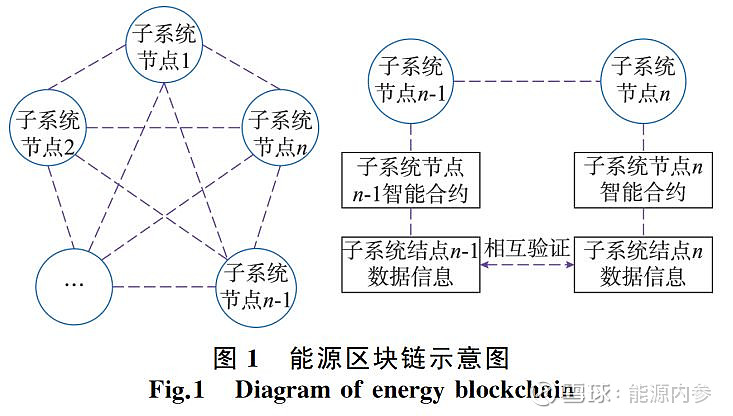
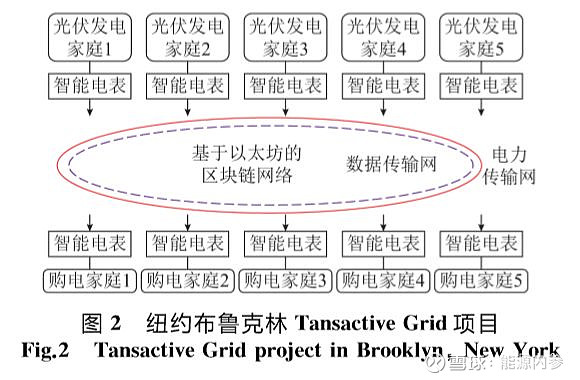
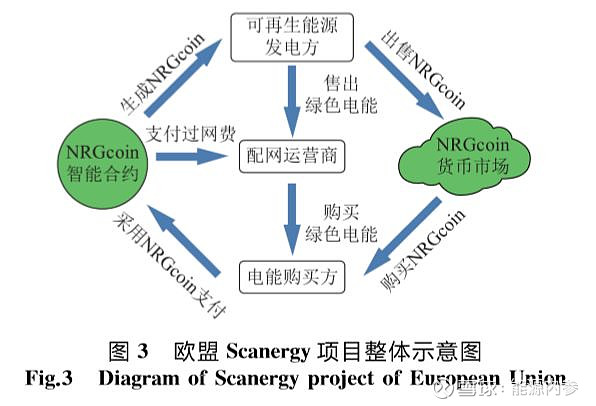
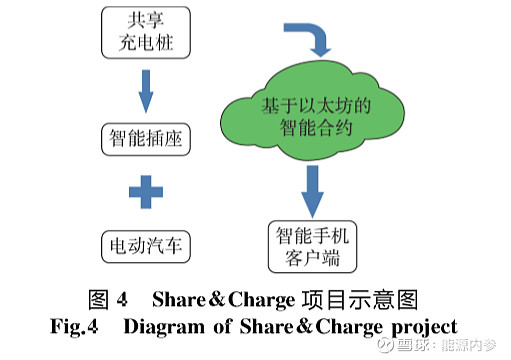
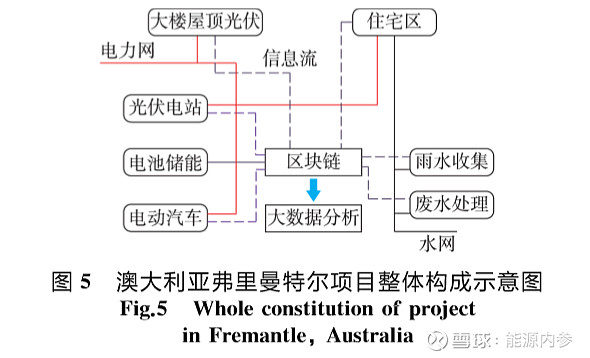
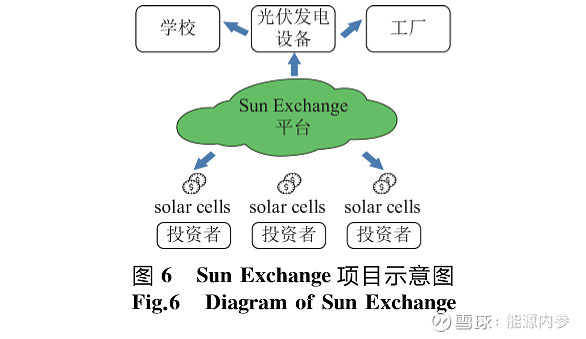
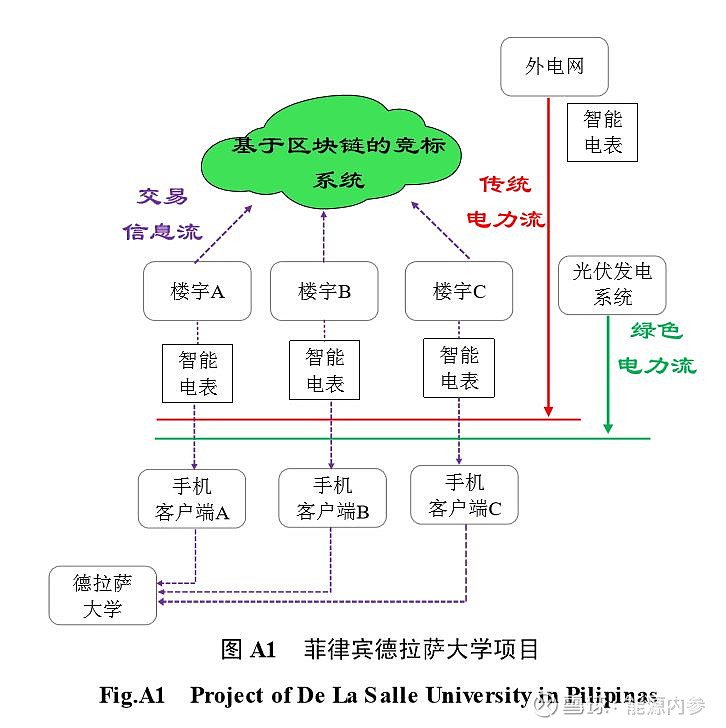
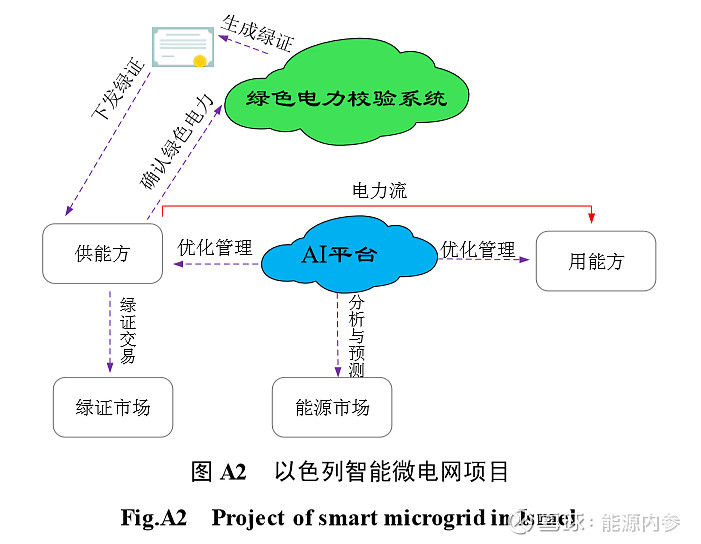
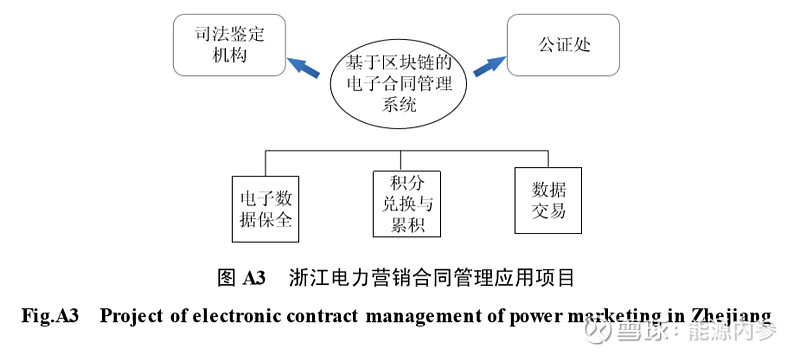
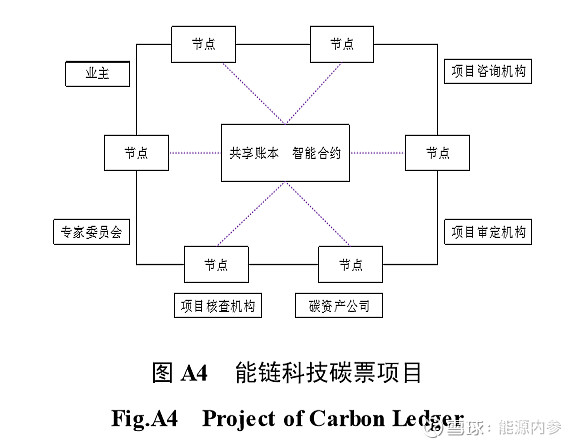
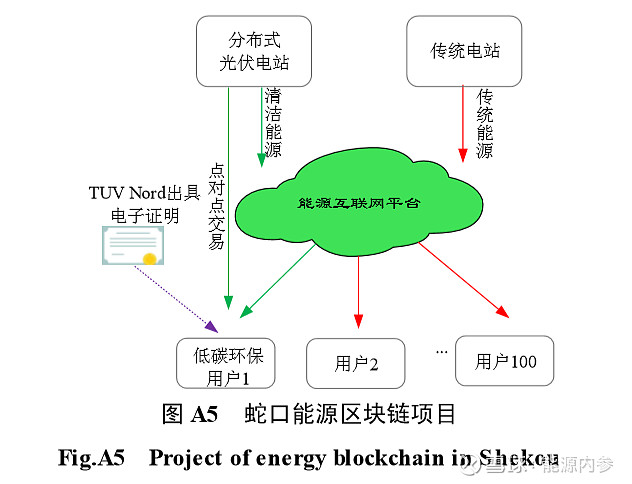
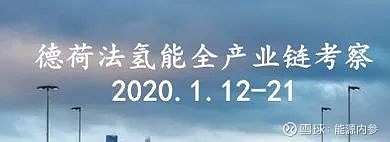
注册有任何问题请添加 微信:MVIP619 拉你进入群

打开微信扫一扫
添加客服
进入交流群





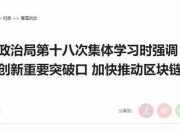











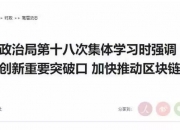


发表评论